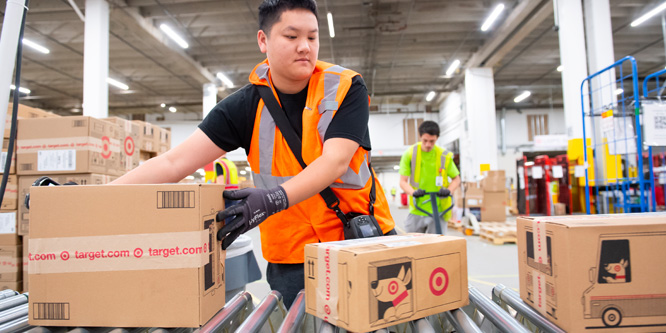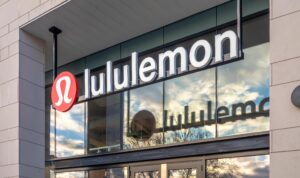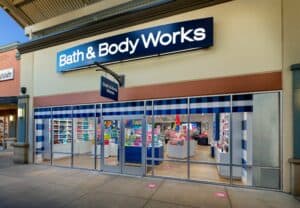
Photo: Target
February 23, 2023
Will Target become the king of next-day deliveries?
Target plans to invest $100 million by the end of 2026 to open six new sortation centers as it seeks to increase the number of next-day orders it fulfills while simultaneously lowering its costs.
The retailer, which fulfills over 95 percent of its online orders from stores, currently has nine sortation centers operating in Colorado, Georgia, Illinois, Minnesota, Pennsylvania and Texas. It opened its first center in 2020 in its home market of Minneapolis.
Rebecca Swartz, director – global supply chain & logistics for Target, in a video explaining the process, said that stores without a sortation center receive orders and then a “team member picks the item, packs it in a box and then sorts that package into separate areas for each individual carrier. In the sortation center process, we can cut out that sortation step. So the store just focuses on the picking and the packing. Then we’re able to have a Target-controlled truck going to multiple different stores multiple times per day and bring them to the sortation center.”
Packages arriving at the sortation center are carried by a conveyor belt where they are separated by zip code. Boxes are loaded into vans from there for delivery to customers’ homes. In the end, said Ms. Swartz, Target gets packages to its customers faster, with all their orders arriving simultaneously.
Target is working with its Shipt delivery business to improve its system. The retailer offers expanded routes through the sortation centers so drivers can use “larger-capacity vehicles that can hold up to eight times more packages per route,” according to the company. Target is testing this system in two sortation center markets and plans to roll it out to all its markets going forward.
Target’s investment in the sortation centers is notable after the retailer cut its forecast for the fourth quarter in November and said it planned to cut up to $3 billion in costs over the next three years.
The chain reported that sales slowed at the end of October (its third quarter) as customers tightened their belts in the face of inflation.
The chain said its same-store sales increased 2.7 percent in the third quarter, following a 12.7 percent jump in the same period in 2021. Customer traffic was up 1.4 percent for the quarter.
Target is expected to report its fourth-quarter earnings on Feb. 28 before the bell rings.
- We’re Expanding Next-Day Delivery Capabilities, Bringing Speedier Delivery to Even More Guests – Target
- How Target’s Sortation Centers Deliver Joy for Guests and Efficiencies for Our Business – Target
- Target warns of soft holiday quarter as profit tumbles and sales slow – CNBC
- Will Target’s ‘stores-as-hubs’ strategy get turbocharged by sortation centers? – RetailWire
Discussion Questions
DISCUSSION QUESTIONS: How do you expect Target’s sortation centers to affect its in-store and last-mile operations? Which stakeholder group will benefit most from this strategy — store associates, delivery drivers or customers?
Poll
BrainTrust
Lisa Goller
B2B Content Strategist
Melissa Minkow
Director, Retail Strategy, CI&T
Gene Detroyer
Professor, International Business, Guizhou University of Finance & Economics and University of Sanya, China.
Recent Discussions







This makes sense for a few reasons. First, it reduces some of the pressure on stores which, from what I hear from many associates, is quite significant. Second, it will reduce costs in the long term. Third, it enhances Target’s delivery speeds which is crucial for satisfying customers. Target has a very good online business, but improving things like delivery times is critical if they want to take some share from Amazon.
Huge credit is due to Target for many years of thoughtful strategic planning and execution. They dominate in one-stop shopping on a range of product, from apparel, to groceries, to pharmacy, to home, to electronics, to Starbucks. And now they mean to dominate in last-mile execution. All while other department business models are stuck in the last century — literally. So hats off to Target for the patient, and sometimes expensive, foresight that they have exercised over the past many years.
Target’s sortation center model lets them put more inventory closer to the customer without having to put it in any single store. That means lower overall inventory carrying costs, less split shipments, better labor efficiency for pick/pack/ship, and less burden on store operations. The result? Stores can focus more labor on serving in-store customers. The reduced split shipments will cut delivery costs, reduce environmental packaging waste, and reduce carbon emissions. Not to mention the convenience to customers of having everything arrive in a single shipment. Well done Target!
Your observation is right on Target. If you continue the logic, it completely removes the entire process from the stores.
How does that put more inventory closer to the customer? The store still picks the order and then the order the store picked goes to the sorting center….
Now for the customer who orders from the store 3 miles from their house, the order goes from that store to some sorting center (where is it? 20 miles away?) then back to the customer’s house. This seems to move the inventory more distance than the previous process.
You’re assuming the store closest to the shopper has 100% of the items the shopper is looking for at 100% availability. But in actuality different locations have different inventory sets and are stocked on different schedules. Over an entire city, however, the whole order can be fulfilled. “The city itself is the DC.”
This method is also an ingenious use of backhauls — the vehicle that makes the deliveries can loop back to the stores for pickups before returning to the sortation center. Whereas if every store is doing its own deliveries half of all vehicle miles are empty.
Finally, for customer orders using non-stocked vendors, this consolidates incoming freight and allows the delivery to contain all items the first time instead of splitting deliveries.
Now for smaller markets, you’re still going to have a store-centered solution — but for major metros where Target has dozens of locations, this really does have the potential to cut down significantly on empty vehicle miles and multiple deliveries to the same house.
Target’s sortation centers will allow a more efficient division of labor. In-store staff focus their resources on picking and packing while Target increases the capacity of its last-mile operations.
Store associates and customers are the big winners, as streamlined processes will improve collaboration and efficiency.
Target’s sortation is a clearly identified, significant bottleneck in its fulfillment process. I expect this investment will benefit both customers and employees — allowing for next-day delivery and for store associates to spend less of their time on fulfillment. I’ll be curious to see if other retailers adopt this approach and now I’m wondering which, if any, already have.
It all seems too convoluted to me. Why include the stores and store associates at all? Walmart and Amazon do next-day delivery well — the more the process provides for stores, the less the chance for automation and speed.
With six “sortation centers,” they will never catch Walmart with their 31 dedicated online fulfillment warehouses nor Amazon’s 175.
Walmart is also moving more of its fulfillment to the store level. Shorter distances = lower cost.
Yes, Walmart fulfills more and more items from the store then delivers the item straight to the customer from the store or uses some third party food delivery service to get it to the customer.
Ideally, shorter distances = lower costs. But Target doesn’t seem to see it that way because what they are doing here is completely different. They are adding distance.
What Target is doing here is moving the inventory additional distances (store to sorting center, then sorting center to customer’s house/delivery point). So this is the opposite of what Walmart is doing.
As I said … convoluted.
Target dominates in one-stop shopping on a range of product and coupled with an established strong online business, the implementation of sortation centre strategic initiative, it will help the retailer dominate in the last-miles execution. Looking at the results so far, it’s clear that Target is on the right track, since start of the pilot run, Target has seen 150% increase in number of orders delivered to guests next day.
The retailer fulfills over 95 percent of its online orders from stores, so it make perfect sense for store to just focus on the picking & the packing and cut out sorting step.
This could be a game changer and win-win-win situation (store associates, delivery drivers and customers) all three parties win.
Sortation centers and the last mile delivery capabilities support customer experience — helping Target deliver more efficiently and faster, at a lower cost, while store associates do what they are best at.
I think a lot of respondents are missing a key detail of this.
They are continuing to pick and pack 95% of orders from the store. Now, instead of the store sorting the packed boxes for each individual carrier and the carrier picking boxes up from the store, the store will just dump the boxes into a bin and a Target truck will pick boxes up multiple times per day and take the boxes the store packed to some centralized sorting center somewhere.
The boxes will now travel further than before to get to this sorting center, there is an added step here in the process, as the box has an added place Target takes it (sorting center) then ultimately to the carrier. This will certainly make it easier for the stores (the stores will no longer have to sort or wait for multiple carriers to show up — but if the Target truck is now showing up multiple times per day to pick boxes up to go to the sorting center how much difference does it really make?), or will it?
Who this will really make it easier for is the carriers. Now the carriers will not have to pick up small lots of packages at multiple Target Stores, rather, they will go pick up larger lots of packages at the sorting center.
My guess is Target’s current process is inefficient and losing so much money that they are working with the carriers for cost concessions and this process was thought up by the carriers to help cut costs.
Incredibly good foresight by Target, executing on what will be increased efficiency in operations, and labor, yielding a nice ROI over time.
Both store associates and customers win, allowing focus on the in-store customer experience.
For Target, this is a matter of efficiency. Sortation centers are typically planned out far ahead of time based on expected growth. I doubt they’d be making the $100MM decisions on the turn of a dime. The expectation of growth is the interesting phenomena and the need for the sortation centers to more efficiently fulfill orders. As for stakeholders who benefit, it has to be a win for the customers for Target to justify the expense — both in terms of convenience and faster delivery. Even if there’s productivity savings for associates or drivers, Target will assign them additional tasks, so not sure the benefit is realized.
We all know who the best is at next-day deliveries. If Target (or anyone) wants to compete in this area, they have to invest and upgrade their process, which is exactly what they are doing.
Target is taking an important step in better competing with Amazon and Walmart by investing in next-day deliveries. The latest J.D. Power pulse study on purchase intentions indicated that 1/3rd of consumers planned to make their purchases purely online. It is this group that will be most affected by Target’s investment, and by building on delivery capabilities, Target can better compete with Walmart and Amazon. Target shoppers who didn’t want to go to the store, but needed something quickly, will be able to better do so through Target instead of feeling that they have to go through Amazon, etc. Even in a rough economy, it is still worth investing when it comes to high-impact areas that can build a customer base, satisfaction levels, and loyalty.